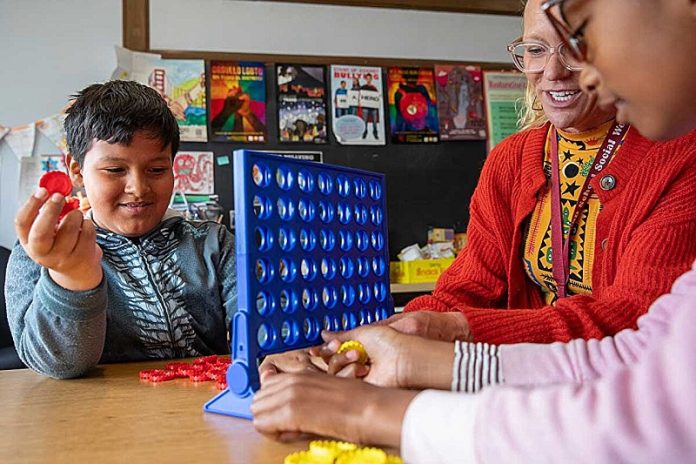
Mornings used to be tough for Lissette and her son Andrew, a San Francisco fifth grader with dyslexia and ADHD.
“He needed constant reminders to get dressed, brush his teeth, and get his shoes on,” Lissette said. His teacher also had to keep reminding him to focus and do his work in class.
Things started to change when Andrew joined the Collaborative Life Skills (CLS) program.
Created by UC San Francisco, CLS helps kids with attention and behavior difficulties by teaching them organizational and social skills. It also trains parents and teachers on how to support these kids at home and in school.
“Most school counselors aren’t trained to help children with attention issues,” said Dr. Linda Pfiffner, the UCSF psychologist who created the CLS program.
“What students need is a plan for both home and school, targeting specific behaviors in both places.”
CLS started in 2009 at the request of the San Francisco Unified School District and has since expanded to over 40 elementary schools, including four Spanish language schools. It even offers remote training for schools in other countries, like Mexico.
The CLS program has made a big difference for Lissette’s family. “Andrew is more motivated now,” Lissette said. “If he’s ready for school early, he gets to play with his little sister. I feel confident I have the tools to really help him.”
At Alvarado Elementary School, social worker Jeanette Feddes leads a CLS group. One sunny day, she had the kids play a game to teach them organization. They had to find objects in messy and organized backpacks. The organized team won quickly, showing the kids that being tidy can save time and make life easier.
Feddes’ eight-week CLS sessions teach kids skills like how to do homework, play fair, get along with others, and manage their emotions and impulses. Parents meet weekly to learn how to support their children at home with strategies like giving specific instructions, keeping routines, and using consistent praise and rewards.
“Parenting a child with attention and behavior challenges can be hard and frustrating,” Feddes said. “Learning and practicing these skills with other parents who understand is powerful.”
Teachers also participate by creating daily report cards that include each student’s goals. They share these with the students and parents, making the whole process a team effort.
“An isolated school-based intervention leaves a lot out,” Feddes said. “When everyone works together, you get better results and more understanding.”
Studies show that the CLS program improves students’ behavior, ADHD symptoms, and social and organizational skills, with results lasting at least eight months after the program ends. The program works well in both English and Spanish and has been effective in schools in Mexico.
The program has evolved over time. “The program now has more visual elements, more digital aspects, and better procedures for when staff are out sick,” said Theresa Gundran-Rosales, a social worker at Robert Louis Stevenson Elementary School.
Efforts to expand the program continue. San Diego schools are implementing it, and successful results from a pilot in Culiacán, Mexico have sparked interest from other cities.
“We hope this work can be useful in more countries where ADHD isn’t commonly recognized,” said Dr. Lauren Haack, who helped adapt the program for Mexican schools.
“Let’s make the program as good as possible and available to as many students as possible,” Pfiffner said. “That’s the ultimate goal.”
For more information about ADHD, please see recent studies about Nutrition’s role in managing ADHD: what you need to know and results showing that Food additives and ADHD: what parents should know.
If you care about ADHD, please read studies about 5 signs you have ADHD, not laziness, and new drug to reduce daydreaming, fatigue, and brain sluggishness in ADHD.



